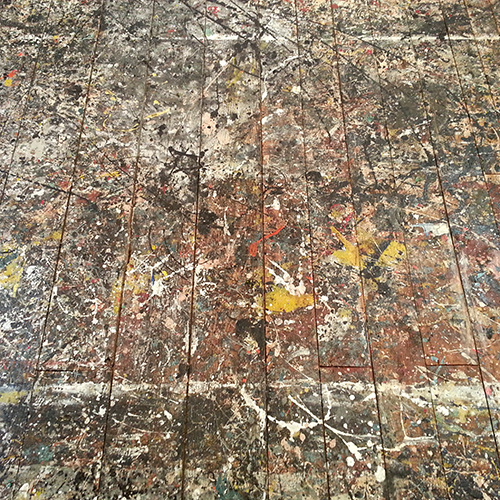
Floor of Jackson Pollock’s studio, Pollock-Krasner House, East Hampton, New York (Photo: Rhododendrites)
On the studio floor of his East Hampton, New York barn, Jackson Pollock transformed unstretched canvas into vibrant, chaotic works of art by dribbling, dripping, and pouring paints in vivid hues of orange, silver, yellow, green, white, and black—sometimes straight from the can, other times with sticks and stiffened brushes. Each stroke and splatter captured the immediacy of his artistic decisions.
Pollock's pioneering style of Action Painting revolutionized modern art, renowned for its explosive physicality and spontaneous, sweeping gestures that earned him the nickname "Jack the Dripper." His work created expansive, nonfigurative webs of color that left an indelible mark on the art world.
Despite his triumphs, Pollock faced personal demons including emotional turmoil and alcoholism. His life tragically ended at the age of 44 in a car crash that also claimed the life of a passenger.
Art historian Janetta Rebold Benton delves into Pollock's life and enduring influence, exploring how he and his contemporaries challenged artistic conventions, opening new avenues for abstraction and creative expression that continue to resonate in contemporary art.
World Art History Certificate elective: Earn 1/2 credit*
General Information
*Enrolled participants in the World Art History Certificate Program receive 1/2 elective credit. Not yet enrolled? Learn about the program, its benefits, and how to register here.